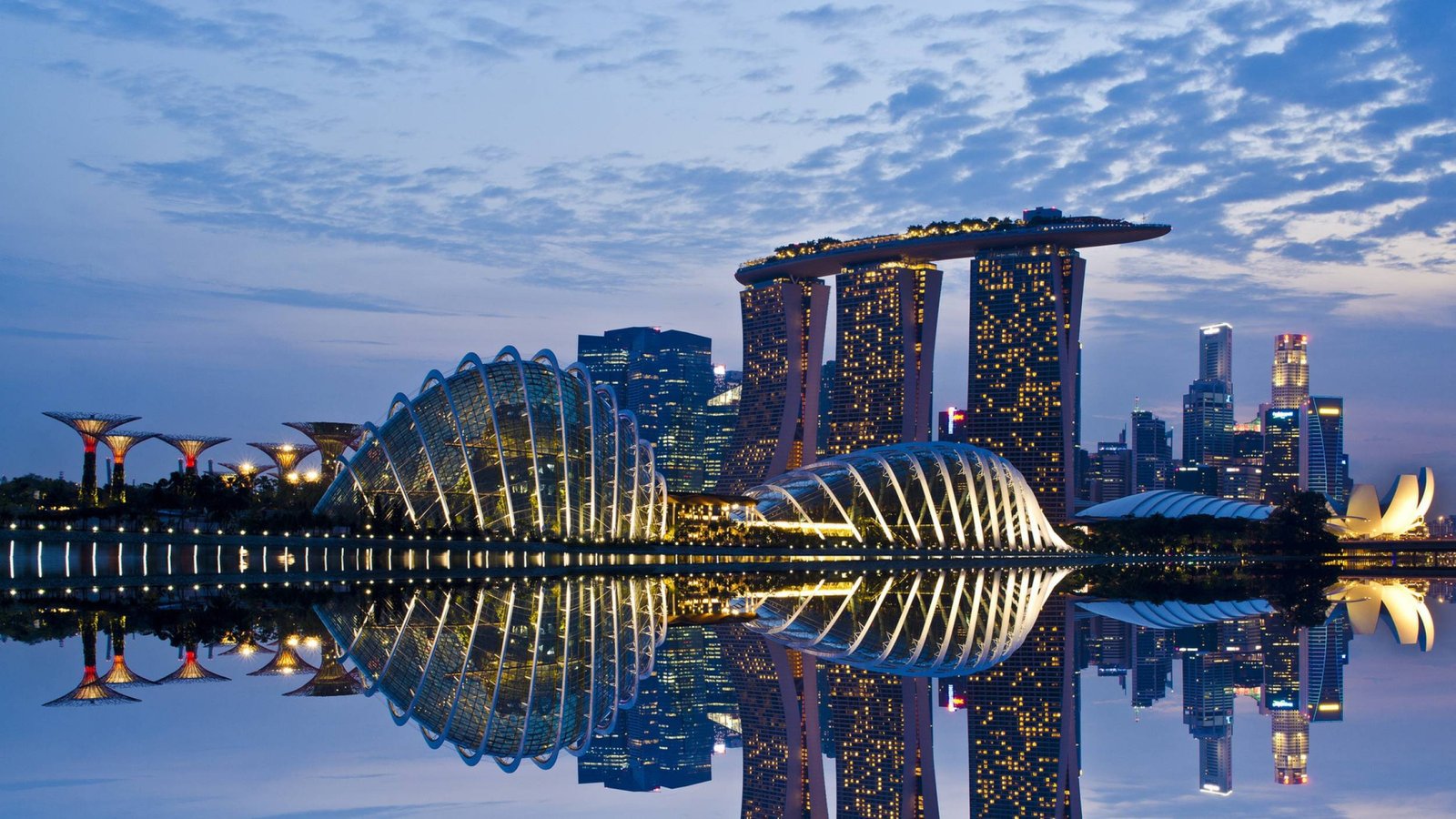
Singapore is oftentimes referred to as the Lion City, the Garden City or the Little Red Dot. It has become one of the world's most prosperous countries and boasts the world's busiest port. Combining the skyscrapers and subways of a modern, affluent city with the combination of Chinese, Malay and Indian influences and a tropical climate, this Garden City makes a great stopover into the region.
Singapore is promoting eco-friendly projects, gardens and green skyscrapers with a view to becoming more sustainable. With its futuristic architecture, efficiency and clean image, Singapore is a sought after travel Destinations.
It ranks 5th on the UN Human Development Index and the 3rd highest GDP per capita. It is acclaimed highly for education, healthcare, life expectancy, quality of life, personal safety, and housing.
Singapore consists of 63 islands, including the main island, Pulau Ujong. There are two man-made connections to Johor, Malaysia: the Johor–Singapore Causeway in the north and the Tuas Second Link in the west. Jurong Island, Pulau Tekong, Pulau Ubin and Sentosa are the largest of Singapore's smaller islands.
Tourism forms a large part of the economy. In 2015, Lonely Planet and The New York Times listed Singapore as their top and 6th best world Destinations to visit. It also developed itself as medical tourism hub. The World Economic Forum's 2015 Global Technology Report placed Singapore as the most "Tech-Ready Nation".
Despite its small size, Singapore has a diversity of languages, religions, and cultures. Since the 1990s, the government has been promoting Singapore as a centre for arts and culture.
The diversity of food is touted as a reason to visit the country and the variety of food representing different ethnicities is seen by the government as a symbol of its multiculturalism.
Large self-contained residential towns have mushroomed all over the island, around the clean and modern city centre. Riverside area is Singapore's colonial core, with museums, statues and theatres. Orchard Road harbours endless series of shopping malls. Marina Bay is dominated by the Marina Bay Sands integrated resort and the Marina Barrage. The northern part of the island, also known as Woodlands, forms Singapore's residential and industrial hinterlands. Singapore Zoo is located here. Jurong homes Nanyang Technological University, Singapore Bird Park, Singapore Science Centre and Singapore Discovery Centre. North East area harbours many residential towns with a heart of Serangoon NEX, Hougang Mall and Compass Point. Sentosa is a separate island with amusement park, Universal studios, resorts and all. Sentosa island also has three white, sandy beaches - Siloso Beach, Palawan Beach and Tanjong Beach - each with its own distinct characteristics, and also very popular with locals.
Classic walks in Singapore include walking down the river from the Merlion through the Quays, trekking along the Southern Ridges Walk. An easy scenic 9 km stroll through the hills and jungles of southern Singapore includes a pedestrian bridge providing a stunning view of the sea beyond the jungle.
Religious sites can be easily visited that include the vast Kong Meng San Phor Kark See Monastery near Ang Mo Kio, the colourful Sri Mariamman Hindu temple in Chinatown, the psychedelic Burmese Buddhist Temple in Balestier, one of the oldest hokkien temples Thian Hock Keng temple and the stately Masjid Sultan in Arab Street.
Singapore is the swimmers’ heaven with huge numbers of public pools. Singapore is also a popular stop for round-the-world and major regional cruises.
Singapore’s best art collections are at the Singapore Art Museum and one can learn about Singapore’s history at the National Museum of Singapore. Mint Museum of Toys for children is really admirable.
Singapore has a tropical rainforest climate with no distinctive seasons, uniform temperature and pressure, high humidity, and abundant rainfall.
Singapore is highly recommended for a travel Destinations for a futuristic technology that reconnects one with nature.